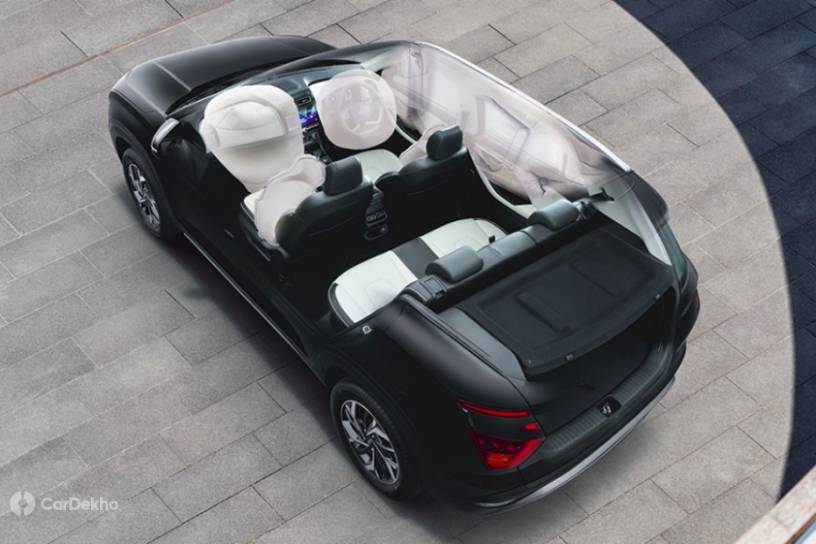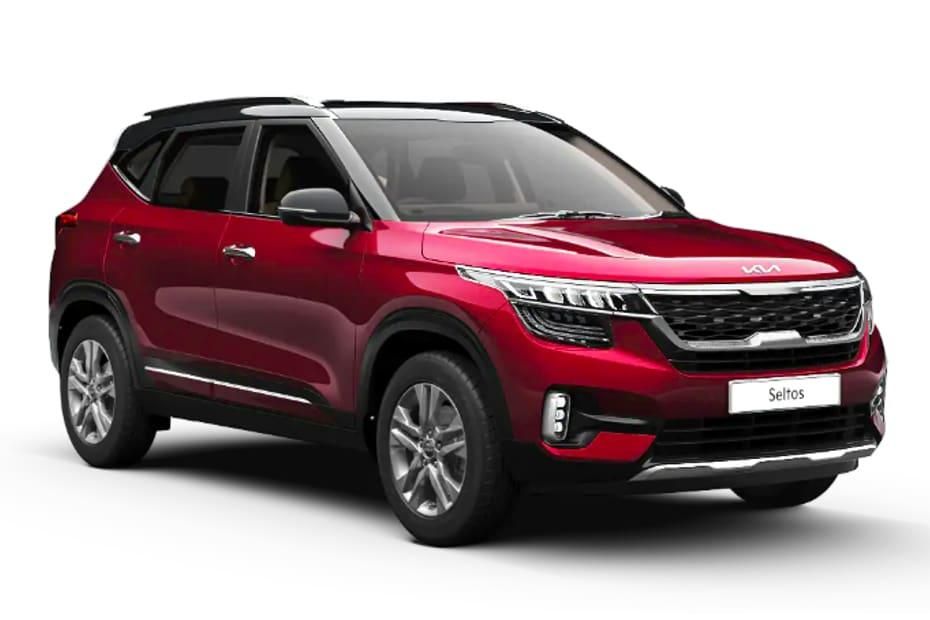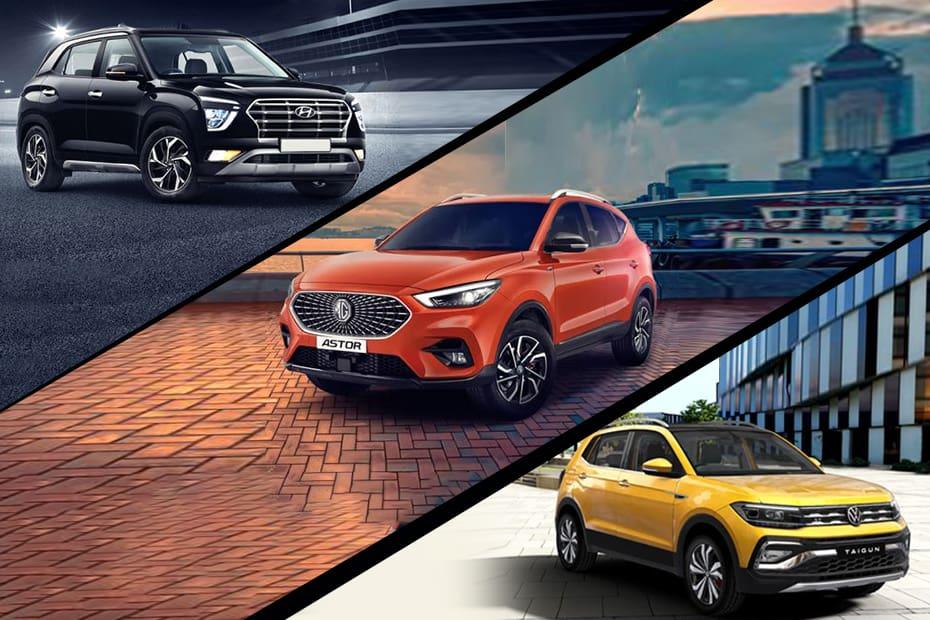Why 6 Airbags Will Only Make A Small Impact On Improving Car Safety In India
Modified On Jan 31, 2022 10:24 AM By Sonny
- Write a comment
A variety of factors suggest that there are better avenues to effectively increase protection for passengers

The topic of vehicle safety has been a high priority in recent years and the Indian government has also started pushing for safer cars with more safety kit as standard. Most recently, the Ministry of Road, Transport and Highways (MoRTH) announced a draft notification to mandate side and curtain airbags in addition to dual front airbags for all cars from October 1, 2022. While we welcome any initiative to try and make cars safer, increasing the number of airbags to be offered as standard may not be the most effective way to do so. Let’s take a look at some of the biggest hurdles and shortcomings in making six airbags mandatory for all cars:
Most mass market cars are not built to accommodate side airbags
Fitting cars with airbags is not as straightforward as fitting accessories like speakers. There is a lot of research and development involved in the storage and placement of side airbags so that they are safe when stored and effective when deployed. Front airbags are fitted in the dash (for the passenger) and the steering wheel (for the driver) while side and curtain airbags would require to be fitted in front seats and along the top of the windowline, respectively. Most mass market cars don’t offer six airbags in any variant and were likely never designed to incorporate them either. Therefore, a mandate to make side and curtain airbags standard fitment would likely require significant changes which may not be feasible in the time given, not to mention the large costs involved. For instance, the likes of the Maruti Wagon R, Renault Kwid, Maruti Alto, Mahindra Bolero and Hyundai Santro would likely require significant changes.


More airbags cannot make up for an unstable body shell
Although additional airbags will help in some scenarios, their role in making cars safer as a whole is hard to justify. Currently, cars sold in India are crash tested by Global NCAP (New Car Assessment Program) under their ‘Safe Cars For India’ campaign and assigned a safety rating based on a variety of factors. It is a relatively basic assessment as of January 2022, wherein cars are tested in a frontal offset crash at 64kmph.
While newer models have improved their rating with dual front airbags as standard, many are still marked down for unstable body shell integrity. Some examples:
| Model Name |
GNCAP Safety Rating |
Body shell integrity |
| Renault Triber |
4 stars |
Unstable |
| Kia Seltos |
3 stars |
Unstable |
| Tata Tigor EV |
4 stars |
Unstable |

One can argue that a car’s ability to retain structural integrity would be more crucial in protecting the occupants in an accident over airbags. While airbags might be able to protect the vital organs at impact, a weak metal frame can still allow significant and fatal damage to the passengers. Based on recent GNCAP scores for Indian models, Mahindra and Tata have stepped up with their all-new models that tend to score four to five stars with a stable bodyshell. Only those cars with a stable body are cleared for further tests such as a side impact crash test.

Meanwhile, India’s biggest carmakers, Maruti and Hyundai, have not made similar progress in improving car safety. Until recently, Maruti’s most affordable cars were still not fitted with dual front airbags as standard. Hyundai may be one of the few models to offer six airbags in the top variants for most of its models but they still suffer from poor scores for structural integrity. For instance, the Hyundai Grand i10 Nios tested in 2020 only scored two stars and its body shell integrity was rated as unstable while the new Tata Punch fared much better with a full five star rating from GNCAP.
Keep in mind, GNCAP is still one of the more relaxed agencies when it comes to testing vehicle safety across various factors, with the Euro NCAP and ASEAN NCAP being far more stringent with their tests before assigning a safety rating. Furthermore, most countries with more stringent safety tests such as the USA, UK, Australia, Philippines and Indonesia also do not demand carmakers to offer six airbags as standard.
Related: All The Indian Cars Crash Tested By Global NCAP In 2021
Need for active safety features over passive ones
There are two types of safety features: active and passive. Airbags fall in the second category as they only come into play once an incident has happened, while active safety features can help avoid an incident in the first place. Thus, additional airbags would only be useful in protecting the occupants in certain types of incidents. On the other hand, additional active safety features such as electronic stability control or ABS can help prevent an incident altogether.

Multiple cases have been studied where active safety features would have helped save lives and six airbags would not be as effective in that endeavour. The Indian government would be better advised to try and implement mandates for standard fitment of more active safety features instead. Even in countries and regions with stricter NCAP tests, cars with dual airbags can score well if they’re fitted with features like autonomous emergency braking, pedestrian detection and lane assist.

Also read: What Is ADAS? How Does It Help? And What Are The Challenges It Faces In India?
Increased costs for purchase and replacement
The increased cost on the manufacturers to incorporate side airbags into their cars will be passed onto the buyers as well, raising the final customer price. We estimate that the added airbags alone would attract a premium of up to Rs 50,000 over the models that already come with dual front airbags. There is an additional cost to customers when it comes to replacing these airbags once they’re deployed in an accident. Even if the cost were to be covered by an insurance company, the burden would be passed on to car owners in the form of higher insurance premiums.
Based on the reasons stated above, it would perhaps be more effective for the Indian government to lay down new guidelines regarding vehicle structure integrity or incorporating more active safety features rather than simply pushing for added airbags.
6 out of 8 found this helpful















